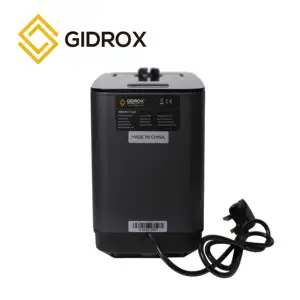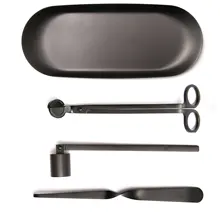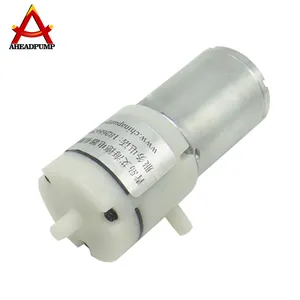Introduction
Welcome to the future of gardening, where the traditional tools of the trade are being replaced by innovative, battery-operated devices. Among these, battery-operated water pumps are revolutionizing the way we care for our gardens. These versatile tools, powered by cordless tool batteries, offer a range of benefits from portability to energy efficiency. In this article, we delve into the evolution of gardening tools, the types and benefits of battery-operated water pumps, and how to choose the right one for your garden. We also discuss important considerations for maintenance and safety.
The Evolution of Gardening Tools
Gardening tools have a rich history, originating from the earliest agricultural implements used by humans. These tools, including the hatchet, axe, sickle, scythe, pitchfork, spade, shovel, trowel, hoe, fork, and rake, were initially made from materials like wood, flint, metal, tin, and bone. With the advent of metalworking, tools evolved to be more durable and efficient, made from copper, bronze, iron, and steel. The use of modern alloys has further enhanced their strength and lightness, making them more user-friendly. The first power tool to gain popularity among gardeners was the lawn mower, marking a significant transition from manual labor to mechanized agriculture.
Understanding Battery Operated Water Pumps
A battery-operated water pump is a versatile tool powered by cordless tool batteries. This pump is designed to fit standard 18v lithium batteries, offering the convenience of powering the pump anywhere. The pump operates on the principle of a centrifugal impeller, which forces water outwards when it revolves. The impeller is housed in a 2-inch UPVC end cap, and the water is expelled through an outlet pipe. The pump is assembled on a base that replicates the base of cordless tools, allowing it to fit on the batteries seamlessly.
Types of Battery Operated Water Pumps
Battery operated water pumps come in various types. These pumps are rechargeable, fully submersible, and can be used for a variety of applications such as dewatering bilges, deck showers, washdowns, or as transfer pumps. They can handle hot or cold water, seawater, antifreeze, and diesel. These pumps are portable, with a height of 5.5 inches and a diameter of 1.5 inches, and can handle up to 100 gallons of water per battery charge. Note that they are not suitable for use with gasoline.
Submersible Pumps
Battery-operated submersible pumps are rechargeable, portable, and can be used in various applications such as dewatering bilges, deck showers, washdowns, or as transfer pumps. These pumps can handle hot or cold water, seawater, antifreeze, and diesel. Each pump comes with a 12V, 280-gph pump, hose, spray nozzle, filter, battery, charger, and two types of adapters. They are 5.5 inches tall and 1.5 inches in diameter, and can handle up to 100 gallons of water per battery charge. Note: They are not for use with gasoline.
Non-Submersible Pumps
Non-submersible pumps, also known as surface pumps, are designed to pump water from surface sources like springs, ponds, tanks, or shallow wells. They should be mounted in dry, weatherproof locations or housings as close to the water source as practical. Unlike submersible pumps, they should not be submerged or allowed to freeze. Most of these pumps are either diaphragm pumps or rotary vane pumps and can run solar-direct for simple, inexpensive operation. Make sure to drain your surface pump system before freezing weather sets in!
Solar Battery Operated Pumps
Solar battery-operated water pumps are top-tier products. They're completely solar-powered, eliminating the need for cables and wires in your garden or pond. The kit includes a brushless solar pump with dry run protection, a 50-watt solar panel, and a backup battery. This allows the pump to operate even at night or during overcast weather conditions. These pumps ensure high-quality and long-lasting operation.
Benefits of Using Battery Operated Water Pumps in Gardening
Battery-operated water pumps offer numerous benefits for gardening. They are environmentally friendly and resource-saving, delivering water from various sources without the need for a power source. This not only saves valuable drinking water but also reduces energy consumption. The automatic function ensures efficient battery use, extending watering times and pump service life. They also offer portability and flexibility, allowing use anywhere in the garden. Additionally, features like the BOOST and ECO modes provide options for full power or longer running time with less energy consumption.
Ease of Use
Battery-operated water transfer pumps are both versatile and durable. They're designed for portability and ease of use on the job site. The pump is adaptable to the operator's own 18V-20V battery. It has a sealed, water-resistant on/off switch for safety. The pump's long, slim design allows it to be placed deep into small cavities. It comes with a comfort grip handle at the top, making it easy to operate. For extra deep reach, an optional 24-inch comfort grip handle can be added.
Energy Efficiency
Energy efficiency is crucial in battery-operated water pumps, as it allows for increased run times between charges. The efficiency of a pump is the ratio of power output to power input, with a higher percentage indicating greater efficiency. For instance, a pump operating at 93% efficiency is considered highly efficient. Pump efficiency also impacts performance, with simpler designs often leading to less energy loss. As the industry moves towards battery-operated equipment, pump design and efficiency become key to achieving performance ratings and maintaining uptime.
Portability and Flexibility
Battery-operated water transfer pumps offer portability and flexibility. Their slim design allows them to be placed deep into small cavities, making them ideal for various applications. The pump is 38 inches from bottom tip to hose outlet, and it can lift water up to 12 feet above the bottom of the pump. It comes with a comfort grip handle for operational ease. For extra deep reach, an optional 24-inch comfort grip handle can be added, extending the total pump length to 66.5 inches. This makes these pumps a versatile tool for contractors and maintenance departments.
How to Choose the Right Battery Operated Water Pump for Your Garden
Choosing the right battery operated water pump for your garden involves understanding the pump's specifications. Important factors include the inlet/outlet size, which determines the pump's capacity. For instance, a 4-inch dewatering pump can finish a job much faster than a 1-inch pump. However, remember that the size of the inlet or suction hose should match the pump's inlet size. Reducing the diameter of the inlet/suction hose is not advisable. These considerations ensure efficient operation and longevity of your battery operated water pump.
Considerations for Maintenance and Safety
Maintenance is crucial for the longevity of battery-operated water pumps. Regular maintenance helps avoid costly repairs and ensures the pump operates efficiently. Damage typically results from cavitation or clogging. Cavitation, the formation of bubbles in low-pressure areas, can cause significant damage to the pump. Regular checks for blockages and adherence to the pump's NPSHr standards can prevent this. Remember, maintenance is a cost of doing business, while repairs are unwelcomed surprises. An ounce of prevention is worth a pound of cure.
Conclusion
Battery-operated water pumps are transforming the gardening landscape, offering a host of benefits from portability to energy efficiency. They come in various types, each with unique features and applications. Choosing the right pump for your garden involves understanding its specifications and considering your specific needs. Regular maintenance is crucial for the longevity and efficient operation of these pumps. As we embrace the future of gardening, these innovative tools are set to become an indispensable part of our gardening toolkit, making gardening more efficient and enjoyable.











































 浙公网安备 33010002000092号
浙公网安备 33010002000092号 浙B2-20120091-4
浙B2-20120091-4